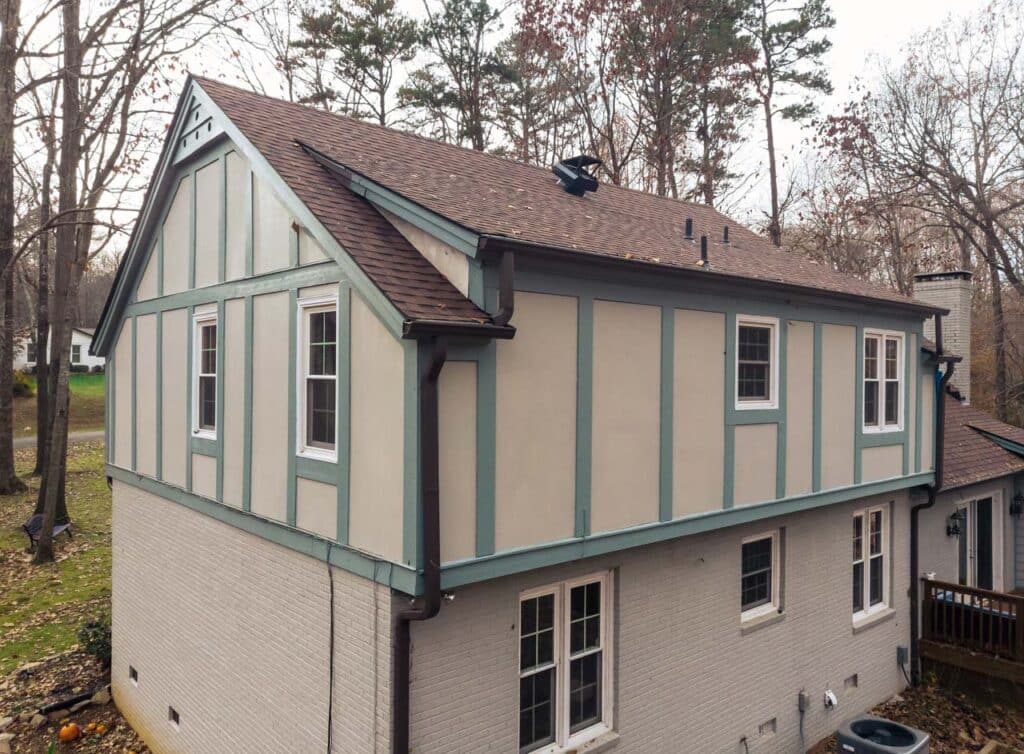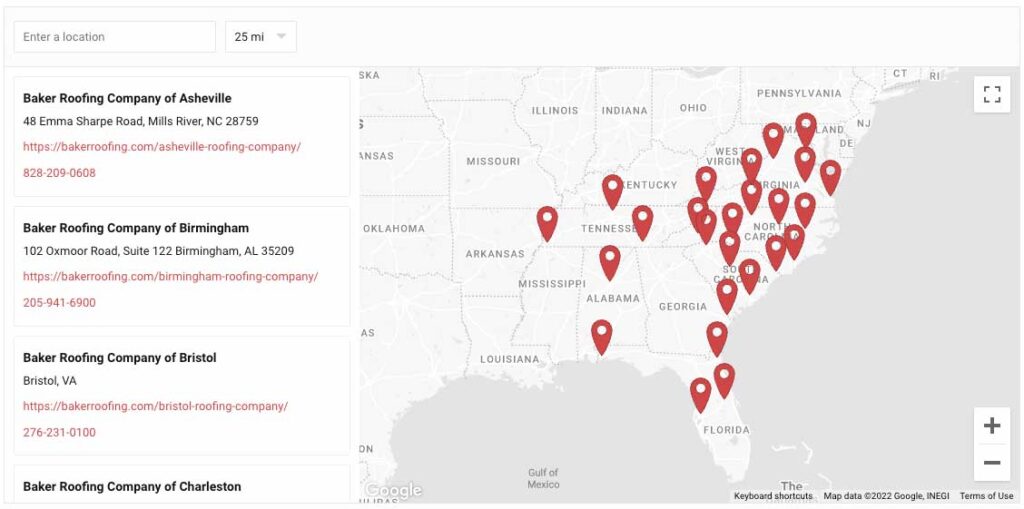The day you’ve been dreading has come: whether it’s because of improper installation, maintenance issues, or even just one bad storm, your flat roof is no longer meeting your expectations, and now it’s time to figure out what needs changing. While flat roofs are an increasingly popular roofing option that can last up to thirty years if cared for right, they inevitably won’t meet everyone’s needs, and a variety of factors can cause them to leak or rot.
So, what’s next? One approach that has grown in popularity in recent years is building an A-frame roof on top of your flat roof. That should solve all your problems, right? By better directing water off the side of your home and preventing stagnating water from causing leaks, A-frame roofs should provide the security that your flat roof just never seemed to offer, at least in theory. However, the reality is much more complicated. In this article, we’ll detail some of the possible dangers of building an A-frame over your flat roof, demonstrating why it may be worth it to fix your current roof rather than replacing it with a system that will wipe out your bank account for only a meager gain.
Cost Considerations
One of the biggest factors to consider when talking about any roofing project is the cost, and that’s especially true when it comes to A-frames. Building an A-frame over an existing flat roof can cost anywhere between two to three times what it would to simply replace it with a new, properly-installed flat roof that will give you less trouble. That’s because in addition to an outsized amount of labor and materials compared to a flat roof, an A-frame would also demand structural changes to your home. On the other hand, flat roofs are generally cost-effective to install and maintain, using your home’s existing structure and minimizing the need for additional expenses.
Engineering Challenges
In addition to costing more, the engineering challenges associated with building an A-frame over a flat roof put your home at greater risk of leaks and structural issues. Remember that this process is remarkably complex, involving not only building an entirely new structure but also ensuring that it integrates seamlessly with the existing roof – needless to say, there’s a lot of room for things to go wrong. Because of that, if there are even minor flaws in the A-frame’s installation (as there likely will be, especially if you don’t hire a quality contractor), your home will be vulnerable to structural decay, leaks, and any number of other problems associated with excessive loadbearing and exposure to the elements.
Maintenance and Repairs
Also keep in mind that a flat roof is typically easier to access for maintenance than a pitched A-frame roof. Consequently, they can make inspections and repairs a lot less difficult, often meaning that these services will cost less. So, if you stick with a flat roof, maintenance will likely be a lot less expensive and painful than it otherwise would be.
Plus, A-frame roofs present their own unique set of maintenance challenges. For instance, the valleys and crevices in the A-frame design can trap debris and moisture, increasing the likelihood of damage over time. Because of that, if you live in an area with frequent inclement weather, an A-frame may require maintenance just as much as – or even more than – a properly-drained flat roof.
Versatility and Energy Efficiency
Of course, perhaps the biggest benefit of flat roofs is the flexibility of use they provide. This has been in especially high demand in recent years as more and more homeowners have opted to install solar panels on their flat roofs. This technology, which has become steadily less expensive over the last decade, can allow you to use your roof for more than just protection from the elements, letting you generate your own electricity and save big on your utility bill. Of course, you can install solar panels on an A-frame roof as well, but the installation process will be substantially more expensive due to difficulty accessing the roof. Plus, you won’t even be able to control the angle they’re facing. In short, you’ll be getting less utility at a higher cost – and you can hardly call that home improvement.
And even if solar panels aren’t for you, flat roofs sport a wide variety of other usages. Because of their versatility, flat roofs can be used for everything from an extra green space if you don’t have much yard space on the ground, to an outdoor patio to give you and your family somewhere to spend your cool fall evenings. In any case, flat roofs can be molded to meet your specific needs, which is more than can be said about sloped roofs.
Permits and Regulations
Finally, many municipalities have stricter regulations and permit requirements for roofing projects when they involve structural changes like adding an A-frame. Because of that, homeowners may need to navigate a maze of permits, inspections, and codes to ensure compliance. The time, effort, and costs involved in obtaining and filling the necessary paperwork can add even more trouble to the overall expense and hassle of what may already be an unnecessary project.
What Should I Do Instead?
With all of that said, you likely wouldn’t be reading this article if you were happy with your flat roof – obviously, something needs to change. So, what should you do? Well, if you’re dealing with smaller problems such as leaks following a big storm, you may be just fine after getting a few professional repairs. This would provide a relatively easy fix without putting too much pressure on your wallet. But, if there are structural problems with your flat roof stemming from improper installation or maintenance, it may be time to replace it altogether. This time, however, you can install the right type of flat roof, one with a proper drainage system that will keep you from having to deal with leaks and last you for upwards of thirty years.
So, while the idea of adding an A-frame to a flat roof may seem appealing for some homeowners, it’s essential to keep in mind what could go wrong. From the substantial cost and engineering complexities to the impact on energy efficiency and maintenance, there’s no shortage of reasons to consider sticking with a flat roof. In the end, a simple flat roof replacement may be your best option, keeping costs low while allowing you and your family to get the most out of your home.



